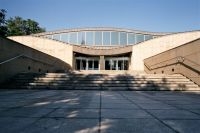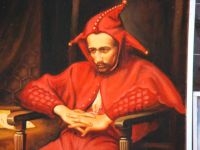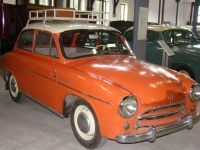Museums in Krakow
Anita Stanislawska - a licensed Krakow City Guide. Nr/Card No: PM/93/07, as well as an English speaking tour leader. Nr/Card No: PW/256/09.
Booking of a licensed tour guide to Krakow and its vicinity, speaking Polish, English, Ukrainian, German, Swedish, Norwegian, Finnish, Danish, Dutch, French, Portuguese, Spanish, Italian, Hungarian, Croatian, Romanian, Turkish, Greek, Czech, Slovak, Belarussian, Japanese, Chinese, Korean, Hebrew, Arabic, Russian, and so on…
Contact number: +48 602 388 200. E-mail: anita@cracow-guide.net
https://www.facebook.com/anita.krakowguide
'The Sukiennice (Cloth Hall) was built in the 14th-century in the heart of the Main Square in Krakow as a market hall. In 1879, in the restored building, the first National Museum was established, whose collection was started with a generous gift of Henryk Siemiradzki - a large-sized painting Nero's Torches.
After the completion of the current modernization, the building houses the Gallery of the 19th-Century Polish Art with the collection of more than two hundred paintings and sculptures representing the most significant trends in Polish art at the end of 18th and 19th centuries: Enlightenment, Romanticism, Academic Art, Realism, Polish Impressionism and the beginnings of Symbolism.'
Renovation and modernisation of the Gallery of 19th-Century Polish Art in the Sukiennice, Krakow.
Project carried out between 2007 and 2010.
Supported by a grant from Norway through the Norwegian Financial Mechanism and promesa programme of the Ministry of Culture and National Heritage of Poland.
KRAKOW under NAZI OCCUPATION 1939 - 1945
Oscar Schindler's Enamel Factory - The best exhibition in Krakow, recently opened !!!
The permanent exhibition titled Krakow under Nazi Occupation 1939 - 1945 opened at Oscar Schindler's Enamel Factory - the new branch of the Historical Museum of the City of Krakow situated at Lipowa 4; is primarily a story about the city and its inhabitants, both Polish and Jewish. It is also a story about Nazi Germans - the occupiers who arrived here on 6 September 1939, brutally disrupting Krakow's centuries-long history of Polish-Jewish relations.
This new exhibition has been created with the use of various means that go beyond the framework of traditional museum exhibitions, such as theatricalization of exhibition space, elements of stage design, multimedia solutions, etc.
Krakow's past has been recreated here in an evocative way in order to give visitors an opportunity to experience history in a direct, almost tangible way.
www.mhk.pl
Pomorska Street, Krakow during the period 1939-1956
"Krakow during the period 1939-1956" exhibition is presented in Silesian House at Pomorska Street 2.
The exhibition consists of photographs, documents, pinups and propaganda posters, and miscellaneous items- items self-made by prisoners, weapons, uniforms, also items connected with Jewish ghetto in Krakow and the Holocaust.
Exposition consists of three parts:
The first part reveals Nazi apparatus of terror and occupier's policy exercised on Polish citizens of Krakow and Holocaust of Krakow's Jews which took place between 1939-1943.
Among the collected items we can see:
•original documents;
•numerous photographs, documenting e.g. triumphal pulling on of the German flag onto the roof of Royal Castle on Wawel, showing German repression acts, including round-up raids, public executions;
•photos of prominent figures (like Krakow's archbishop Adam Sapieha, or the main patronage council chairman - Adam Ronikier);
•so called "death posters"- lists of polish hostages meant for execution;
•German propaganda posters;
•personal items self-made by polish prisoners - priceless attestations of those times, e.g. chess made of bread, chaplet made of string, or a napkin embroidered by women detained in Krakow's Montelupich prison;
•unique fragments of the Grunwald statue devastated by Germans
Second part of the exposition shows various means of Krakow's citizens' rebellion against German occupation, their participation in creating the polish underground. Illustrating boards present information, photos, documents and other objects connected with conspiracy activity of government representation, or rather Krakow's District Representation, secret education, so called "small sabotage", underground publishing activity and armed resistance, mainly performed by Home Army.
The third, and smallest part of exhibition shows us the activity of independence- longing underground groups from the years after 1945, and examples of Stalin's' acts, communist repression apparatus aimed at every opposition against the newly forming totalitarian system. Among the objects a special attention deserve doors from the cell of former prison of Krakow's Security Service at Inwalidów Square 4, and also a statue showing bust of gen. August Emil Fieldorf "Nil", creator and commander of Kedyw of Home Army and Organization called "Nie"- a legendary hero of the Underground sentenced to death by PRL's court in 1953.
www.mhk.pl
Old Synagogue - Szeroka 24. History and culture of cracowian Jews.
"Eagle Pharmacy" museum - Bohaterow Getta 18
Historical Museum of Cracow City - Rynek Glowny 35. Exhibitions connected with Cracow. Worth visiting.
National museum - 3 Maja 1 str. Painting and sculpture. Permament and temporary exhibitions. It has rich collections of modern art. I invite you to see museum’s website, there you will find actual topics of exhibitions. www.muz-nar.krakow.pl
Czartoryski Museum - Jana 19. The first museum on polish land. Painting, sculpture, very interesting collection of souvenirs. Famous painting of Leonardo Da Vinci : “Lady with Ermine” (also called "Lady with little weasel") – is the ‘icon’ of Cracow. One of the 13 confirmed pictorial masterpieces of Leonardo Da Vinci. The master art of light-shadow. Anyone who visits Cracow should see this masterpiece. “Countryside with merciful good Samaritan” - painting of Rembrandt from 1638 . It is one of the six oil landscapes painted by Rembrandt. Baroque act of light and shadow.
There is no more famous piece of art in Poland it is also hard to imagine more popular and talented artist in so many fields then Leonardo da Vinci in the whole world. Da Vinci is in the top 3 most popular painters in the world. Nevertheless in his job application to the duke of Milano, he first mentioned his engineering skills and at the end he wrote that he also can paint...Therefore he painted only about 20 paintings and 4 portraits. Because he was great experimenter also with his painting so... many of his pieces are in very bad condition today. (For example last supper is repainted every few decades so it is hard to say how many % of it is genuine Da Vinci).Lady with an Ermine from Czartoryski collection is one of the 4 of is portraits, the best preserved painting of him and according to many specialist one of the greatest piece of Leonardo. Which make it one of the greatest piece of art of all time! This event is a guided tour in the museum with the most famous Polish collection, which in 2017 was bought by Polish state for 500 mln PLN. Leonardo da Vinci painting itself cost at least 1.300 mln PLN, the prize of whole collection with buildings is estimated for about 10 mln PLN. Museum is re-opened after 9 years renovation. Tour will be focus on the history of collection, Czartoryski family and da Vinci painting itself .
Museum of Stanislaw Wyspianski - Siekorskiego Square 3. On the groundfloor interesting temporary exhibitions. First floor – personage of Stanislaw Wyspianski, his paintings, drafts, graphics, stained glasses… Very beautiful! On the last floor – personage of Feliks Jasinski-Manggha, part of japanese art collection, which he gave to the Museum of Japanese art and Technique Manggha.
Centre of Japanese art and Technique "Manggha" - M. Konopnickiej 26. It was founded by famous director Andrzej Wajda and his wife Krystyna Zachwatowicz. The land of the rising sun in Cracow. This is the buiding with undulating roof on the right riverside. www.manggha.krakow.pl
House of Jan Matejko - Florianska 41. Home of a great artist painter. Souvenirs, paintings, drafts, projects. I encourage to visit.
House of Józef Mehoffer - Krupnicza 26. Artist of "Young Poland", the student of Jan Matejko and friend of Stanislaw Wyspianski. His works of arts found appreciation in Cracow and abroad. Worth visiting, and in the summer walk through Mehoffer’s Gardens.
Archidiocesan Museum - Kanonicza 19. Museum connected with the Pope John Paul II. Bedroom and apartament where he lived. Collection of gifts, that he received and then he gave them for exhibition. Painting, sculpture, galery of photographs.
Palace of bishop Erazm Ciolek - Kanonicza 17.
Art from romanizm till baroque.
Museum of Archeology - Poselska 3. The sculpture of "Swiatowid" from roman limes found in the river Zbrucz. Reconstruction of dresses over the centuries. Archeological finds in Poland and e.g. in Egypt - rich collection of mummies, both human and animal. Very interesting museum for children

Museum of Hipolit’s Family - Jana 19. Reconstruction of bourgeoin house.
House under the Crucifix - Szpitalna 21. History of cracowian theatre. Personage of famous Helena Modrzejewska who is known also beyond the ocean.
Museum of Pharmacy - Florianska 25. History of pharmacy from the middle ages till nowadays. Moreover, at museum, interior of the pharmacy from the XVIIIth century was reconstructed.
Museum of Jagielonski University Collegium Maius - Jagiellonska 15. (info Cracow extra)
Cracowian factory of stained glasses - Krasinskiego Av. 23. It came into existence in 1902. Those stained glasses decorate many objects in Cracow. Today we can admire them in the Centre of Information & Exhibition on the square All Saints. Three beautiful stained glasses designed by Stanislaw Wyspianski, which were to decorate Wawel cathedral: Prince Henryk Pobozny, St. Stanislaw and King Kazimierz the Great. Guess who is who…???

Museum of Etnography - Pl.Wolnica 1
Museum of Aviation - Jana Pawla II 39. Place for those who are interested in aviation.
Museum of Civil Engineering - st.Wawrzynca 15; His first steps on-kart races put Robert Kubica Formula 1 Driver









The Czartoryski Museum

Leonardo da Vinci - Lady with an Ermine

Sukiennice-Cloth Hall - paintings

Manggha Museum

clown - Stanczyk

Engineering museum - "Syrena"

"Warszawa"




